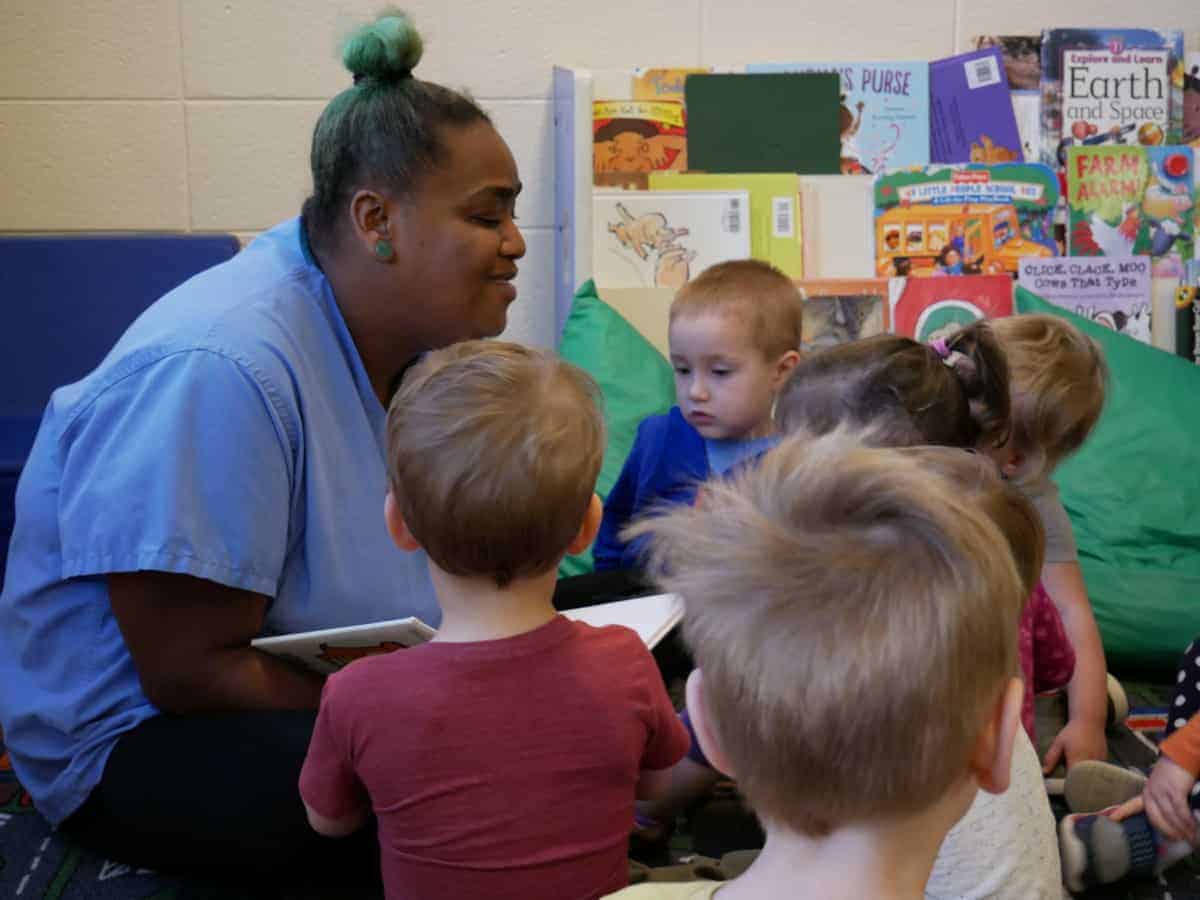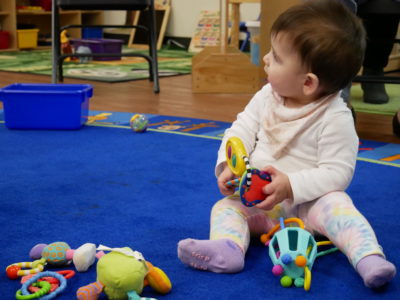
Share this story
- Ninety-two percent of child care programs have been using federal relief money to increase employee compensation, a @CCSAchildcare study found in December. Yet they still have had difficulty finding new staff.
- “We have subsidized child care on the backs of women,” says Danielle Caldwell, a Durham home-based provider. “If we continue to do it, they’re going to say that we can do it.”
|
|
Child care providers are concerned about April 2023, when federal stabilization funds end that they have used primarily to increase teachers’ wages.
The funding from the American Rescue Plan, which started reaching North Carolina child care programs last November, gave some relief to providers and teachers who cared for children through school closures and health risks — mostly without health insurance or living wages.
The state Division of Child Development and Early Education (DCDEE) is spreading North Carolina’s $805 million from the plan over 18 months. More than half of that funding has been spent in the form of quarterly grants to more than 4,100 centers and home-based programs, according to a DCDEE dashboard.
Sign up for Early Bird, our newsletter on all things early childhood.
Ninety-two percent of applicants who had signed up by December were using the money to increase employee compensation, a Child Care Services Association study found. Yet they still have had difficulty finding new staff.
“They are struggling, and they know that these dollars are going to run out next April,” said Marsha Basloe, CCSA’s president, on a webinar last Wednesday outlining the study. “And that means that we’ve got to do something now to get that money for next year.”
The state legislature is expected to wrap up its 2022 session this week, and no additional child care funds are on the horizon in the budget.
‘It helped us from drowning’
Child care providers on Wednesday’s webinar said the funds kept them afloat but were not enough to compete with other industries that were also raising wages.
“Don’t get me wrong, I’m very thankful just for the stabilization grants,” said Cassandra Brooks, owner and director of Little Believer’s Academy, a child care program with locations in Clayton and Garner that serves about 125 children.
“It did help advance child care — well, it helped us from drowning. So thank you. But when we moved forward, the rest of the industries throughout the United States took two or three steps forward. Target went to $24 an hour. Who do you think will pass up $24 an hour versus even $15 an hour with your stabilization grant to come and do a hard job?”
And providers cannot raise the cost of care without more families losing access, said Elaine Zukerman, director of communications and advocacy for the NC Early Education Coalition.
“These other places that are paying $15, $18, $20 an hour (can do so) because they have a product where they can raise the cost to cover those higher wages,” Zukerman said. “Child care can’t do that. So we’re really facing an unprecedented crisis right now.”



When the stabilization funds run out, Michele Miller-Cox said, she doesn’t know how to maintain the 17% raise she gave her staff at First Presbyterian Day School in Durham, a nonprofit program serving about 64 children. She’s working with the program’s board with an aim to maintain a 10% raise, she said.
“It does worry me,” Miller-Cox said.
Danielle Caldwell, a family child care home provider in Durham, used the stabilization funds to cover fixed costs while she went back to school to earn her birth-through-kindergarten education degree and provided after-school care. She’s back to providing full-time care for the youngest but said she is “exhausted.”
“If we continue to do it for less, they’re gonna say we can do it for less,” Caldwell said. “… We have subsidized childcare on the backs of women … If we continue to do it, they’re going to say that we can do it. So you know, we have to come to a full stop and say it’s just not going to work anymore.”
A need for ‘some consistency across the board’
Anna Mercer-McLean, director of the Community School for People Under Six in Carrboro, used the funds to redesign the program’s salary scale for the first time in more than 15 years, provide hiring bonuses and gas stipends, and support teachers’ mental health.
She pointed to immediate actions that could help: a continuation of grant funds, funding for education-based wage supplements like Child Care WAGE$, and raising rates for providers to serve children with working parents who qualify for the state’s subsidy program.
“That is the only way I think we’re going to be able to maintain what we’re doing, if we can create some consistency across the board … having some ongoing funding to support what we do,” Mercer-McLean said.
The legislature is considering House Bill 731, which would bring back an option to “test out” of EDU 119, the one course that is required for eligibility to work in licensed child care programs. Charles Hodges, director of the NC Licensed Child Care Association, said the bill is an effort to address staffing shortages by increasing the pool of eligible child care workers. The early childhood faculty at community colleges would be responsible for creating the test.
The Senate passed the bill unanimously. It now sits in the House rules committee.
But more is needed to get at the larger staffing and funding issues, Hodges said.
“It’s going to be a bigger process because it’s subsidy reimbursement, pre-K reimbursement, it’s how do we truly get people into the pipeline early on,” Hodges said in an interview with EdNC.
“It really, to me, is going to take vision by all of us — by providers, by community colleges, by DCDEE, by the legislature, to figure out really how do we incentivize people at an early point to get into the field? How do we get it paid for or reimbursed? How do we make it as simple as possible so that we can get the numbers of teachers back into the system to support not just the workforce within child care, but the workforce’s child care needs?”



Some in the field are worried that decreasing requirements would be a step in the wrong direction.
Cyndie Osborne, co-chair of the NC ACCESS Early Childhood Faculty Association, was working as a child care licensing consultant when the test-out option went away more than a decade ago. It was a move to professionalize the field, she said. NC ACCESS has been working on infusing EDU 119 with trauma-informed strategies.
“How is someone coming in and taking a test going to decrease the crisis that we have in front of us?” Osborne said in an interview with EdNC. “The crisis doesn’t have anything to do with their education. The crisis has to do with … I can go make more money stocking shelves, or working and packing boxes, than I can working in the field of child care.”
On last week’s webinar, Brooks quoted the Sam Cooke song, “A Change is Gonna Come,” as a claim over the future of the field.
“I pray that they can make some changes before, what, April, because if not … it will not be the same voices that you hear right now, because people will not be able to survive,” Brooks said. “They cannot survive.”
Correction: A previous version of this article misstated the entity that would be responsible for creating the test if House Bill 731 becomes law. The early childhood faculty at community colleges would create the test.
Recommended reading




